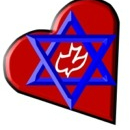Revelation 8:7
The End Times
In my last post, we explored Revelation 8:2-6 and I shared an overview of the Four Views on the Seven Shofars contained in Revelation 8-10. In this post, we will explore the impact of the First Shofar.
“The first one sounded his shofar; and there came hail and fire mingled with blood, and it was thrown down upon the earth. A third of the earth was burned up, a third of the trees were burned up, and all green grass was burned up.” ~ Revelation 8:7 (CJB)
The first four shofar judgments affect nature directly and people indirectly (compare Matthew 24:4-8) and resemble the plagues of Egypt (see Psalm 105:29, 32), while the last three plagues (Revelation 8:13) affect people directly. (compare Matthew 24:13-22).
The idea that the End Time plagues will recapitulate those of Egypt can be found in the Midrash Rabbah: [1]
“‘Behold, tomorrow about this time I will cause it to rain a very grievous hail such as has not been in Egypt from the day it was founded until now’ (Exodus 9:18) …. However, there will be one like it in the time to come. When? In the days of Gog and Magog, as it is written, … ‘A torrential rain, and great hailstones, fire and sulfur’ (Ezekiel 38:2, 22).” (Exodus Rabbah 12:2)
Consider the function of the Egyptian plagues. The well-known song, “Dayenu” ([It would have been] “Enough for us”), from the Passover Haggadah, says that God through the plagues judged both the Egyptians and their gods (compare Revelation 9:20). He did this by turning against the Egyptians the very things they worshiped. They worshiped the Nile River; it became blood. They worshiped beetles (scarabs); they got lice and locusts. They worshiped frogs and found them in bed. They worshiped the weather and had their crops destroyed by hail.
If these verses in Revelation are to be understood literally, then, since God uses nature to accomplish his purposes, one can imagine asteroids plunging into the earth, other materials from outer space darkening the skies and infecting the water, and heat flashes setting fire to the vegetation; and one can seek scientific explanations for such phenomena. But if these are graphic but figurative ways of describing God’s judgment and the terror it will evoke, such speculations and researches are irrelevant. There are intelligent, well-informed, God-fearing New Testament scholars taking each approach.
It may be important at this juncture of our study to reiterate a simple rule to follow when interpreting Scripture. Always interpret every statement in the Word of God literally, meaning exactly what it says, unless it is stated otherwise or the structure and content are such that you can see that the passage concerns a figure or symbol (Matthew 13:31; 13:47; Rev. 8:8). Using this rule, there is no more reason to interpret these passages of Scripture symbolically than we would interpret the plagues on Egypt in the book of Exodus symbolically. With the judgment of this first trumpet comes, exactly as it says, hail and fire mingled with blood, which destroys a third of all vegetation growing on the earth. Imagine what the environmentalists will be saying!
Special Comparative Note on Chapter 8:7 [2]
Historicist Approach:
Historicists hold that the first four shofars represent the four great blows that fell upon the Western Empire fir the beginning of the fifth century to its fall in 476 CE. Barnes believes these images in verse 7 symbolize war and the bloodshed and destruction of vegetation that accompanies war. Most interpreters identify this first shofar with the military conflicts between the Western Roman Empire and the hordes of the Goths and Vandals under Alaric. Matthew Henry suggests the trees and grass destroyed in this judgment could represent the church’s clergy and laity.
Preterist Approach:
Preterists view was generically explained in my last post. Most share the view Matthew Henry above as to the trees and grass.
Futurist Approach:
Most, but not all, dispensational Futurists take the scene literally. The difference seems to be with a symbolic interpretation of the trees and the grass. Hal Lindsey opines that all the ecological catastrophe described in Chapter 8 are the direct result of nuclear weapons.
Idealist Approach:
Idealists believe that the shofars serve as a warning of greater judgments to come as we will see when the Seventh Shofar is blown releasing the Seven Bowl judgments beginning in Chapter 15.
In my next post, we will explore Revelation 8:8-9 the Second Shofar.
[1] Jewish New Testament Commentary by David Stern
[2] Material in this section is taken from “Revelation: Four Views, Revised & Updated” by Steve Gregg.

Reblogged this on Talmidimblogging.
LikeLiked by 1 person
I agree with your interpretation philosophy, that was correct and it flows with the OT way of interpreting unless the text tells you otherwise.
LikeLiked by 1 person